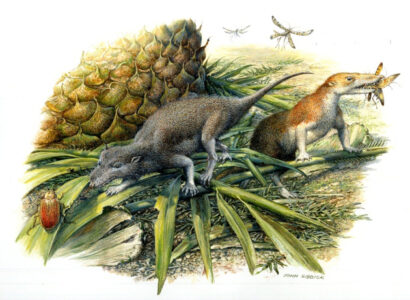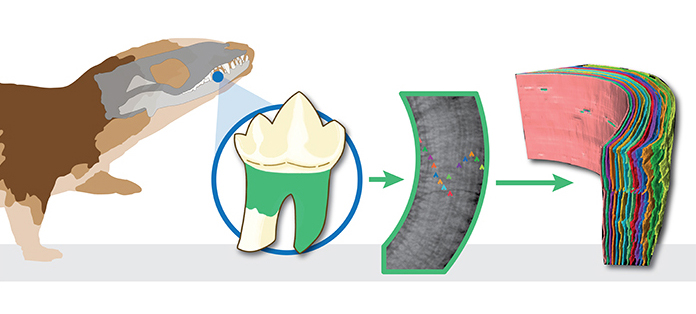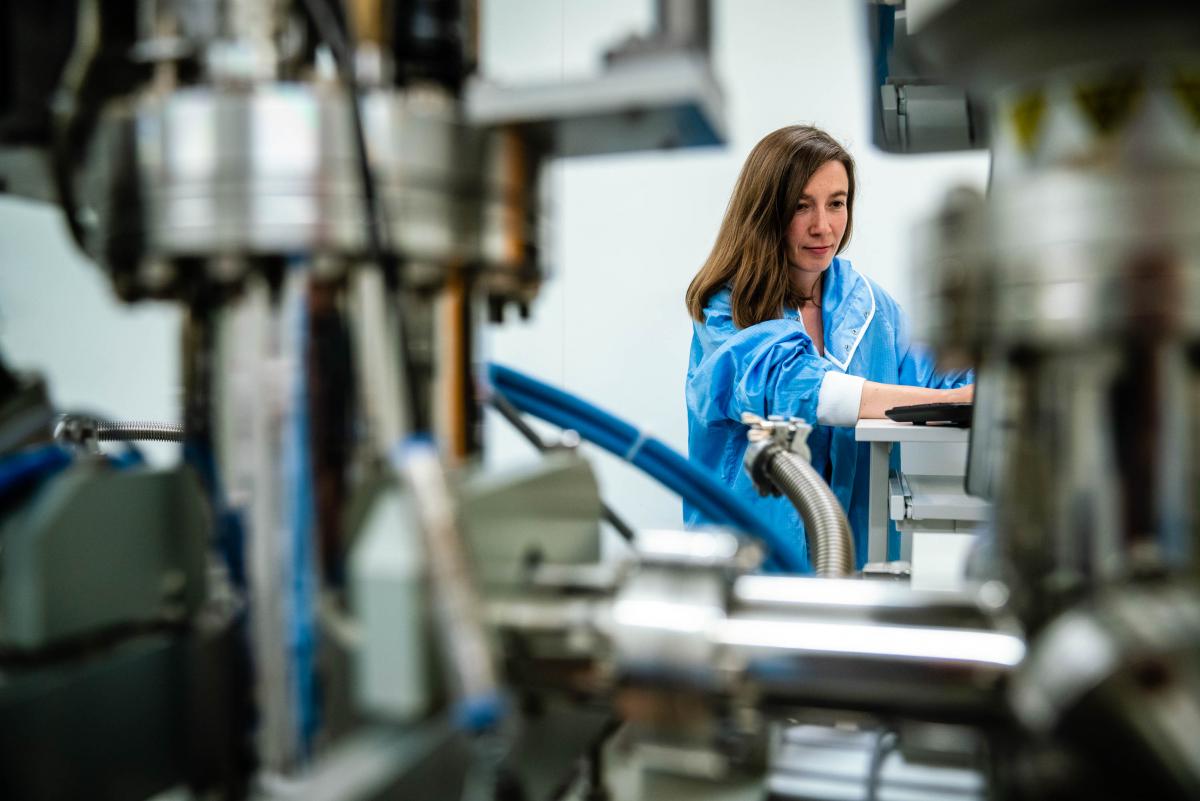Ancient tiny teeth reveal first mammals lived more like reptiles Understand article
This article was originally published on ESRF News.
A study of 200 million-year-old teeth from the earliest mammals provides fascinating insight into how they lived.

In research led by the University of Bristol (UK) and University of Helsinki (Finland), palaeontologists have been able to study the physiologies of fossilized early mammals directly for the first time.
Fossils of teeth, the size of a pinhead, from two of the earliest mammals, Morganucodon and Kuehneotherium were scanned for the first time using powerful X-rays at three different beamlines of the ESRF and at the Swiss Light Source, shedding new light on the lifespan and evolution of these small mammals. They are known from Jurassic rocks in South Wales, and, until now, were believed to be warm-blooded by many scientists.
The scans carried out at the ESRF’s beamline ID19, ID16A and the former ID22 allowed the team to study growth rings in their tooth roots, deposited every year like tree rings, which could be counted to unveil how long these animals lived. The results indicated a maximum lifespan of up to 14 years – much longer than their similarly sized furry successors such as mice and shrews, which tend to only survive a year or two in the wild.
“We made some amazing and very surprising discoveries. It was thought the key characteristics of mammals, including their warm-bloodedness, evolved at around the same time,” says lead author Elis Newham, research associate at the University of Bristol and co-corresponding author of the paper.
“By contrast, our findings clearly show that, although they had bigger brains and more advanced behaviour, they didn’t live fast and die young but led a slower-paced, longer life akin to those of small reptiles, like lizards”, he adds.

From left to right: reconstruction of Morganucodon; Morganucodon tooth with cementum, the structure that locks the roots to the jawbones, highlighted in green; as it grows non-stop throughout life, cementum deposits every year like tree rings, highlighted using coloured arrows; These were turned into 3D models to count 14 years of life in the shrew-sized Morganucodon.
Image: Nuria Melisa Morales Garcia. Morganucodon based on Bob Nicholls/Palaeocreations 2018 model.
The journey saw the researchers take some 200 teeth specimens, provided by the Natural History Museum London and University Museum of Zoology Cambridge, to be scanned at the European Synchrotron and the Swiss Light Source. The reason why they had so many samples is because these mammals fell into caves and holes in the rock, where their skeletons, including their teeth, fossilised. “Thanks to the incredible preservation of these tiny fragments, we could examine hundreds of individuals of a species, giving greater confidence in the results than might be expected from fossils so old,” explains Ian Corfe, researcher at the University of Helsinki and Geological Survey of Finland, and co-corresponding author.
The experiments at the ESRF were done on three different beamlines. On the former ID22, the team did some pilot scans in X-ray microtomography, which were followed by the bulk of the specimens scanned by microtomography experiments on ID19 and key specimens imaged with nanoscale holotomography experiments on ID16A. “We took large teams to ESRF to scan as many samples as possible – we needed a suitcase to take home all the hard drives with the data on! The experience was intense but really rewarding, especially our chats with the beamline scientists about the samples and the results. The multiscale tomography approach, which let us scan hundreds of specimens with microtomography, and the best preserved of those to be scanned again at very high resolution with nanoscale holotomography, was really vital in making sure we definitely had the material in the tooth roots containing the growth rings preserved in the fossils, and in sampling enough specimens to confidently estimate the lifespans”, explains Ian Corfe. This was also the first time that a team of palaeontologists used the nanotomography beamline ID16A.
“The findings highlight one of the unique features of the beamline – the combination of high energy, nanometre spatial resolution and high contrast sensitivity. This enabled us to obtain precise images of the highly absorbing fossil specimens”, says Alexandra Pacureanu, scientist at ID16A.

©ESRF/Stef Candé
“We digitally reconstructed the tooth roots in 3-D and these showed that Morganucodon lived for up to 14 years, and Kuehneotherium for up to nine years. I was dumbfounded as these lifespans were much longer than the one to three years we anticipated for tiny mammals of the same size,” Newham said.
“They were otherwise quite mammal-like in their skeletons, skulls and teeth. They had specialised chewing teeth, relatively large brains and probably had hair, but their long lifespan shows they were living life at more of a reptilian pace than a mammalian one. There is good evidence that the ancestors of mammals began to become increasingly warm-blooded from the Late Permian, more than 270 million years ago, but, even 70 million years later, our ancestors were still functioning more like modern reptiles than mammals”.
While their pace of life remained reptilian, evidence for an intermediate ability for sustained exercise was found in the bone tissue of these early mammals. As a living tissue, bone contains fat and blood vessels. The diameter of these blood vessels can reveal the maximum possible blood flow available to an animal, critical for activities such as foraging and hunting. In the thigh bones of Morganucodon, the team found that the blood vessels had flow rates a little higher than in lizards of the same size, but much lower than in modern mammals. This suggests these early mammals were active for longer than small reptiles but could not live the energetic lifestyles of currently living mammals.
References
- Newham E, et al. (2020) Reptile-like physiology in Early Jurassic stem-mammals, Nature Communications. doi: 10.1038/s41467-020-18898-4.
Resources
- Behind the scenes: read about the researcher’s experience at ESRF.
- Find exciting ideas for your Earth science classroom.
- Gain interesting insight into the mechanisms of evolution.





